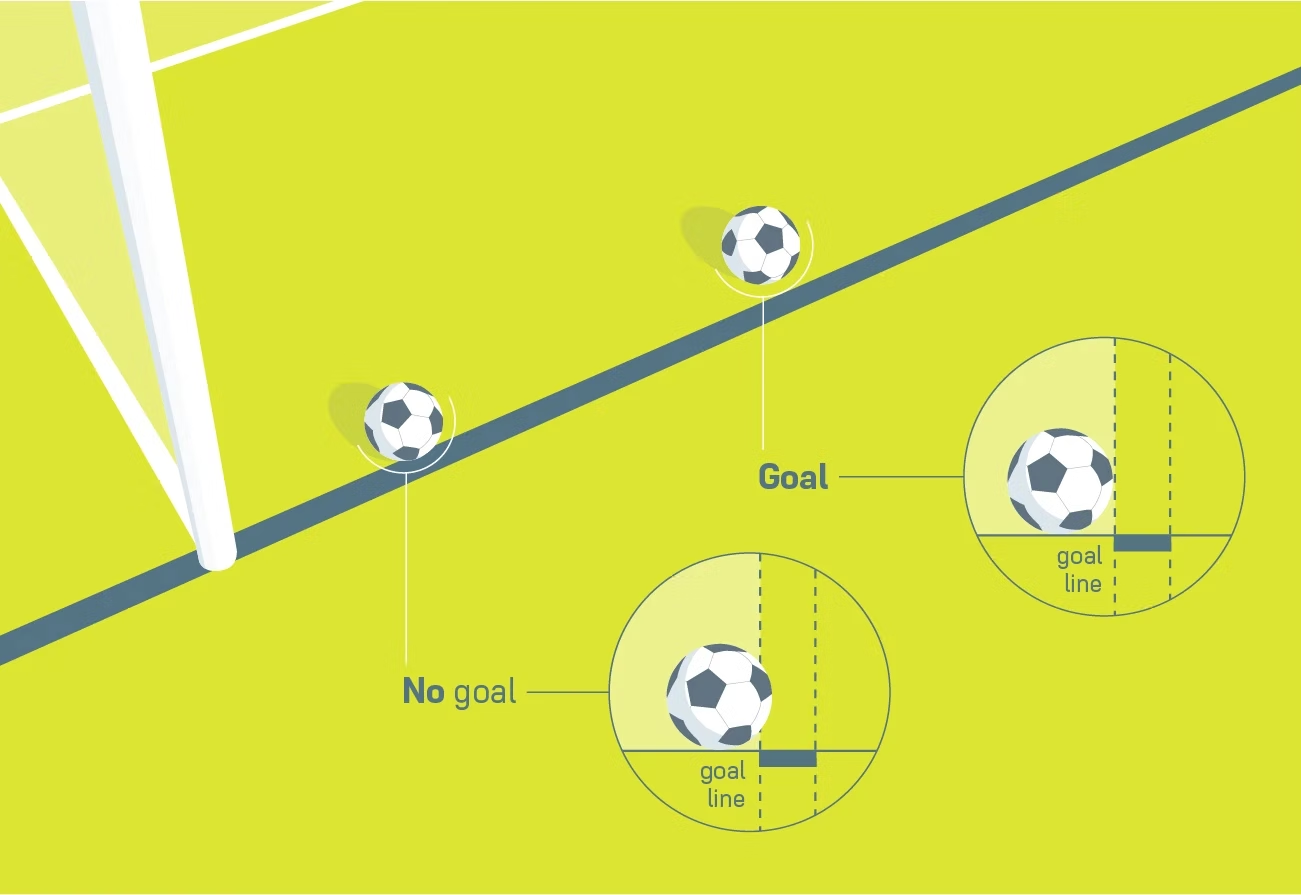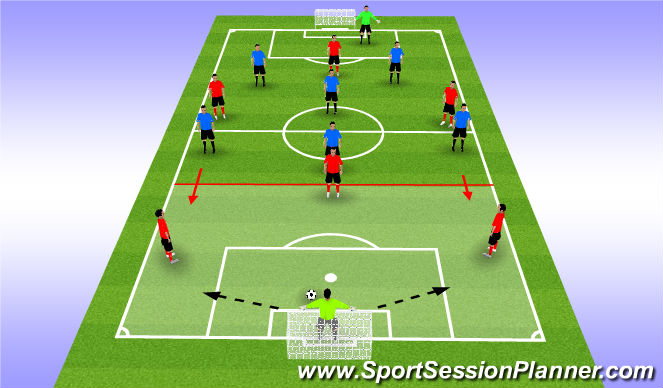PSC GUIDELINES FOR U10
The primary goal of this division is to use the individual skill gained from U6/U8 and apply it to a team environment. Players should begin learning positions and maintaining their space on the field while avoiding swarming the ball.
The Ball
Size 4 ball
The Players
Number - Seven (7) per team on field, one of which is goalkeeper (minimum of six (5) players to continue)
Substitutions - Unlimited both teams between periods, on goal kicks, after a goal, extended time-out (e.g. injury, cautions, send-offs) Unlimited only for team taking throw-in
Playing Time - Minimum of half of the game.
Player Equipment
Shirts, shorts, shin guards, socks, shoes; No jewelry and nothing dangerous.
Socks to cover shin guards; Same color shirts (except goalkeeper).
Duration of Game
Two 25-minute halves; halftime interval 3-5-minutes. If playing in high temperature this will be adjusted to four 12.5-minute periods; halftime interval 5-minutes, 1-minute between other periods.
Referees
As per TN Soccer directives; top priority is player safety
Every effort should be made to keep the game moving and free from stoppages for doubtful infractions.
Every decision is at the discretion of the referee crew and should be respected.
Ball Out of Play
Ball is out of play when it completely leaves the field-of-play over the touchline or goal line, either on the ground or in the air;

Ball is also considered to be out of play whenever the referee blows the whistle and the game is stopped;
Restarts
Player may not touch the ball again at the taking of a free kick, goal kick, corner kick, kick-off or throw-in until it has touched another player (restart is IFK to opponents).
Kick-Off
All players on both teams must be on their own half of the field with the exception of the kicker; Opponents must also be outside the center circle;
Ball is in play when it is kicked and clearly moves in any direction; Kicker may stand in the opponent's half of the field.
Dropped Ball
Restart when the referee stops games as for an injury, outside interference, weather or accidental whistle. The ball will be dropped to the team that was in clear control of the ball when play was stopped at that location;
The exception is if the ball was in the penalty area, then it will be dropped to the goalkeeper;
All players remain 4.5 yds from the ball until it is in play;
The ball is in play when it makes contact with the ground;
Requires touch by two different players for a goal to be awarded.
Free Kicks
Opponents must be at least 8-yds. from the ball or on goal line between the goal posts;
Ball in play when kicked and clearly moves;
Direct Free Kick (DFK) - a goal may be scored on the first touch;
Indirect free kick ( IFK) - two touches required for a goal to be allowed.
Penalty Kicks
Results when a DFK is committed inside a player's own penalty area;
All players (except kicker and goalkeeper) to be outside penalty area, penalty arc and behind the ball; Ball must be clearly kicked in a forward direction.
Misconduct
PSC believes the goal of rec soccer is to learn the game for everyone involved and therefore the referee will only issue a card when there is no choice. Cautions (yellow card) and send-offs (red card) should be administered as conditions dictate to manage play. PSC will give several warnings before a YC is issued. A RC will only be issued in severe cases of a player not following instruction from the referee or for serious foul play.
Offside
Offside offense occurs when a player in offside position interferes with play or an opponent as per Law XI;
Restart is an IFK at the location where the player in the offside position commits the interference.
Throw-Ins
Restart when the ball goes over the touchine (side line); Throw-in taken by opponent of player who last touched the ball;
Thrower's feet must be on or outside the touchline; Throw-in taken with both hands from behind and over the head;
All opponents must stand 2 yds away from the point of the throw;
Ball is in play when any portion of the ball breaks the outside plane of the touchline into the field-of-play after having been thrown;
When an improper throw-in is taken, the referee should stop play and award throw-in to opponents;
A goal cannot be scored directly from a throw-in.
Goal Kicks
Restart when the ball goes over goal line (end line) last touched by an attacking team player;
Ball is to be placed anywhere inside the goal box. Ball is in play when it is kicked and clearly moves;
Opponents must be outside the penalty area until the ball is in play;
Goal may be scored directly from a goal kick.
Build Out Line
Before a goal kick is taken, all players from the defending team must be behind the build out line. If the keeper takes a kick before players are across the line they do so at their own risk.
When the keeper makes a save or when a goal kick is being taken. all players from the defending team must move to be behind the build out line. If the keeper takes a kick before the defending players are across the line they do so at their own risk. Defending players will be reminded to move behind the line in a timely manner.

Corner Kicks
Restart when ball ball goes over goal line (end line) last touched by a defending player;
Opponents must remain 8-yds. from the corner area;
Ball is in play when it is kicked and clearly moves; a goal may be scored directly from a corner kick.
Scoring
When the whole of the ball completely crosses the goal line between the posts and under the crossbar, provided that no offense has been committed by the team scoring the goal.
Fouls
In accordance with criteria defined in Law XII.
Offense committed on the field-of-play and while the ball is in play; typically involves contact
Contact fouls result in a direct free kick (DFK) restart
Non-contact fouls and technical infraction result in an (IFK) restart.
Handball
For the purposes of determining handball offenses, the upper boundary of the arm is in line with the bottom of the armpit. NOT EVERY TOUCH OF A PLAYER’S HAND/ARM WITH THE BALL IS AN OFFENSE;
Offense if a player deliberately touches the ball (motion to the ball);
Offense if a player touches the ball with their hand/arm when it has made their body unnaturally bigger;
A DFK offense when a player deliberately plays the ball with their hand or arm;
Accidental contact, i.e. ball striking hand or arm with no intent by player, is not an offense and should not be penalized;
Instinctive, self-protective reaction is not a deliberate attempt to play the ball and should not be penalized unless there is movement toward the ball.
Heading the Ball
Per TSSA guidelines there is to be no intentional heading of the ball. Any intentional play will result in in an IFK to the opposing team. Any accidental heading will not be penalized. ALL balls taken to the head with force will result in play being stopped to check on the player and will resume with a dropped ball.
Because of this rule there is also no punting or drop kicks from the keeper. When the keeper saves the ball they must put the ball back into play by throwing, rolling, or playing the ball out.